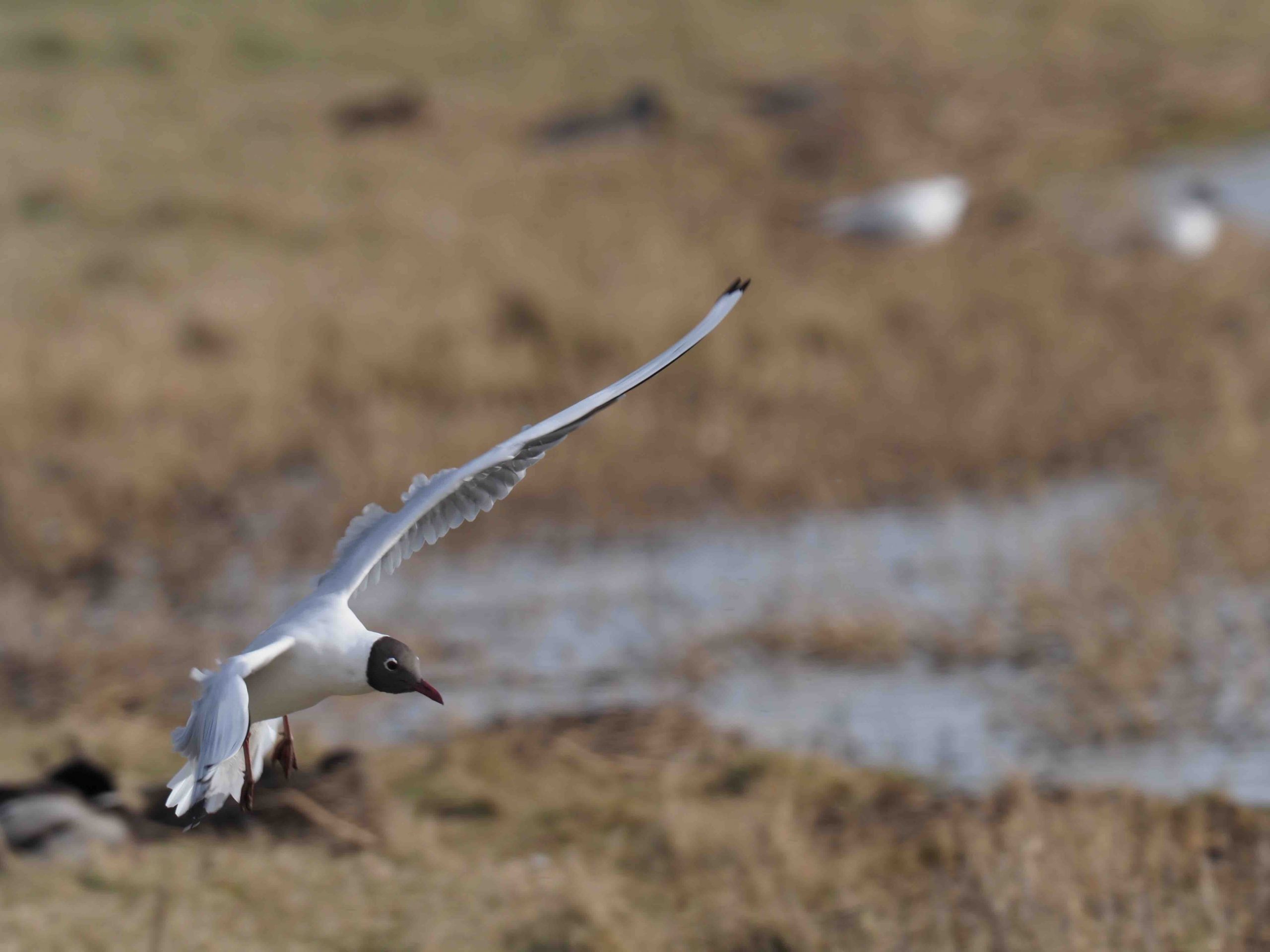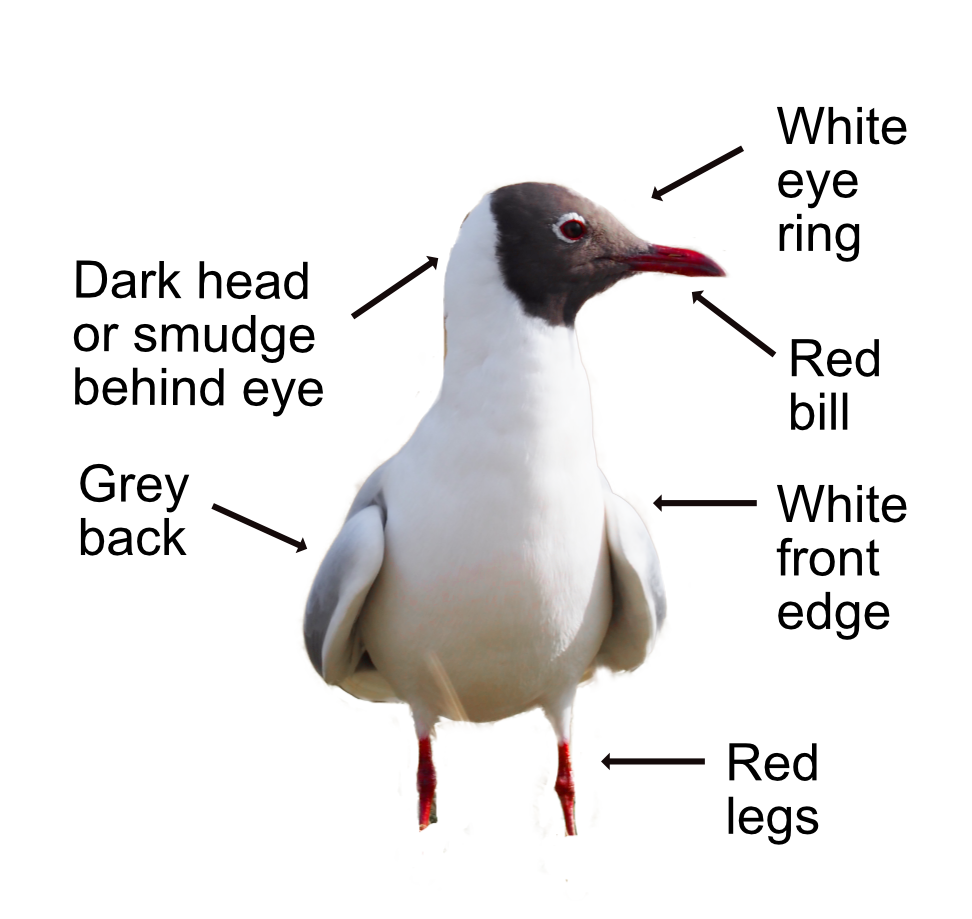
Surprisingly, given all the raucous noise it makes, the Black-headed Gull is the smallest of our common gulls and is more at home in a town park than at the seaside. They are the Essex boys of the gull world, always squabbling amongst themselves. If they could wear bling and a tracksuit, they would.
Black-headed is not a brilliant description of this gull as it has a white head for half of the year (with a blotchy smudge behind the eye) and a dark brown one for the rest - it just looks black from a distance. Their body is white with a pearl grey back. The bill and legs are bright red. There is an obvious white stripe along the front edge of their wings which helps to identify them when flying. The wings have black tips and look dark underneath. Their call is a very distinctive, loud, harsh, grating "tree-arrrgh" as if they are hoarse from shouting at each other so much.
These Essex boys will eat almost anything including fish, crabs, worms, seeds, rubbish tip waste, and insects. They will even mob other birds for food - like playground bullies. In fact, they even like to visit school playgrounds in winter for scraps, so keep tight hold of your Dairylea Dunkers.

Breeding starts in April with the male selecting a site and building a rough nest from a pile of vegetation on the ground. Finding a spot can be tricky as Black-headed Gull colonies can vary in size from a few birds to many thousands! The female joins in to complete the nest. Both birds sit on the 2-3 eggs, which hatch after 23 days. Both parents feed the young which leave the nest after 10 days and can fly 15 days later. One particular behaviour of the Black-headed Gull is that they remove the eggshells from the nest once the chicks have hatched. The youngsters are fed by the parents regurgitating food onto the ground, rather than into each chick's mouth, and the chicks take it in turns to munch through the mess. Once they have left the nest, the young birds take two years to reach full maturity - and learn enough swear words to impress the girls.
The breeding population in Britain is about 200,000 pairs but swells up to over 2 million individuals in winter as the Northern European birds come over for a squabble. Most of the British birds are locally resident though may move about in winter to find food. Black-headed Gulls can be found on farmland, towns, beaches, roofs, car parks, playing fields, rubbish tips - just about everywhere. They can be found over much of Europe, except Spain, Italy and Greece where they were banned for loutish behaviour. The oldest known Black-headed Gull lived to be 32 years old.
Their Latin name is 'chroicocephalus ridibundus' where 'chroicocephalus' is from the Ancient Greek 'khroizo' meaning 'to colour' and 'kephale' for 'head'. The 'ridibundus' is Latin for 'laughing'.